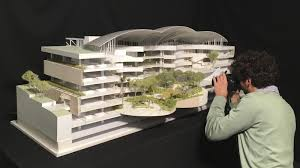Introduction
architectural model making is a vital aspect of the design and presentation process in the field of architecture. It enables architects, designers, and clients to visualize and understand the design concept, while also serving as an essential tool for marketing and communication. In this article, we will explore various techniques, materials, and applications of architectural model making, demonstrating its importance in the architectural world.
- Techniques in Architectural Model Making
- Traditional Handcrafting: This technique involves using manual tools and materials like foam, cardboard, balsa wood, and styrene to create physical models. Handcrafted models require a high level of skill, patience, and creativity but offer flexibility and a personal touch.
- Laser Cutting: By using laser technology, architects can cut materials with precision, creating intricate and detailed components for their models. Laser cutting is ideal for creating accurate and complex designs.
- 3D Printing: With the advancement of 3D printing technology, architects can now create highly detailed and customized models. This method allows for rapid prototyping, making it an increasingly popular choice for architectural model making.
- CNC Milling: Computer Numerical Control (CNC) milling machines can carve and shape materials with high precision, making them suitable for creating large-scale models and topographical landscapes.
- Materials Used in Architectural Model Making
- Foam: Lightweight and easy to shape, foam is a popular material for creating architectural models. It can be easily cut and carved to create desired forms.
- Cardboard and Paper: Widely available and inexpensive, cardboard and paper are commonly used for creating quick, simple models or for early design exploration.
- Balsa Wood and Basswood: These lightweight and easy-to-work-with woods are ideal for creating detailed architectural models that require a high level of craftsmanship.
- Acrylic and Plastic: Durable and versatile, acrylic and plastic materials can be used for creating transparent or translucent elements, such as windows and water features, within an architectural model.
- Metal: Metals like brass, aluminum, and steel can be used for creating structural elements or details in architectural models, adding a sense of strength and permanence.
- Applications of Architectural Model Making
- Design Exploration: Architectural models allow architects to explore and refine their design concepts, providing an opportunity to identify potential issues and make necessary adjustments.
- Client Presentation: A physical model helps clients visualize and understand the proposed design, allowing for better communication and collaboration between the architect and the client.
- Marketing and Promotion: High-quality architectural models can be used as a powerful marketing tool, showcasing the design’s potential and attracting clients, investors, or buyers.
- Education and Training: Architectural models can serve as valuable teaching tools, helping students learn about design principles, construction techniques, and materials.
Conclusion
Architectural model making is a fascinating combination of art and science, with techniques and materials that continue to evolve alongside technological advancements. By understanding the various methods and applications of architectural model making, architects can ensure that their designs are effectively communicated and understood, ultimately leading to better-built environments.

